成人式の会場を彩る、色とりどりの華やかな振袖姿。多くの日本人にとって、それは大人への門出を象徴する晴れやかな光景です。しかし、なぜ成人を迎える若者たち、特に女性がこの「振袖」を身にまとうのでしょうか?その答えは、優雅に揺れる長い袖に秘められた、豊かな歴史と文化的なメッセージの中に隠されています。
この記事は、単に振袖を「美しい着物」として紹介するものではありません。その起源から現代における新たな役割まで、振袖が持つ奥深い世界を紐解いていきます。
- 袖の長さに隠されたメッセージ: 単なる装飾ではない、厄除けと愛情表現のサイン
- 江戸時代の流行が起源? 振袖の意外なルーツと進化の歴史
- 「未婚の証」から「門出の祝福」へ: 現代に生きる振袖の新たな役割
振袖とは何か?基本に込められた願い
振袖は、未婚女性が着用する着物の中で最も格式が高い「第一礼装」とされています。その最大の特徴は、くるぶしに届くほど長い袖(袂(たもと))です。この長い袖には、見た目の美しさだけでなく、大切な意味が込められています。
日本では古来、「振る」という行為には特別な力があると信じられてきました。神様を招き、魂を揺り動かし、そして厄を払う。この考えから、振袖の長い袖を振ることで、持ち主の厄を払い、身を清めるという意味合いが生まれました。特に女性の厄年とされる19歳を迎えるにあたり、成人式で振袖を着ることは、これからの人生の幸せを願う大切な儀式となったのです。
さらに、この「振る」という行為は、恋愛における感情表現にも繋がっていました。言葉で直接的に愛情を伝えることがはしたないとされた時代、女性たちは袖を振ることで男性に想いを伝えたと言われています。振袖の長い袖は、良縁を引き寄せるという願いも託された、ロマンチックなシンボルでもあったのです。
華麗なる変身の歴史
振袖の直接の起源は、江戸時代に遡ります。当初は「振り八つ口」という、脇の部分が開いた子ども用の着物が原型でした。これは、体温の高い子どもの熱を逃がすための工夫でしたが、元服前の若い男女も着用していました。
この長い袖がファッションとして注目されるきっかけとなったのは、意外にも江戸時代の踊り子たちだったと言われています。彼女たちが舞台上で身のこなしをより美しく、華やかに見せるために袖を長くしたスタイルが評判を呼び、やがて裕福な町人の娘や武家の未婚女性たちの間で大流行しました。
明治時代以降、振袖は正式に「未婚女性の第一礼装」として社会に定着します。結婚すると、この長い袖を短く詰めて「留袖」に仕立て直すのが一般的でした。袖を切ることは、結婚して家庭に入る女性が「誰かのために袖を振る必要がなくなった」ことを意味し、夫への貞節の証ともされたのです。
伝統と革新の現代
現代において、振袖が「未婚の証」という意味合いで語られることは少なくなりました。その役割は、成人式や卒業式、結婚式のお色直しなど、人生の重要な節目を祝福する「ハレの日」の特別な衣装へと大きくシフトしています。
この変化を象徴するのが、「ママ振り」という新しいトレンドです。これは、母親がかつて成人式で着た振袖を、娘が受け継いで着用するスタイルを指します。小物を現代風にアレンジすることで、古典的な柄の美しさを生かしつつ、自分らしい個性を表現できるのが魅力です。実際に、母親世代の振袖は高品質な国内で作られたものが多く、現代の振袖と比べても見劣りしないため、資源の節約や環境への配慮という点からも支持されています。
このように、高品質な着物を大切に受け継ぐ「ママ振り」や、多様なデザインから選べるレンタルサービスの充実は、振袖という伝統文化が、現代の価値観やライフスタイルに合わせてしなやかに形を変えながら生き続けている証と言えるでしょう。
これからの振袖が紡ぐ物語
振袖をめぐる環境は、時代と共に変化してきました。その意味合いは「未婚のシンボル」から「門出を祝う華やかな礼装」へと移り変わり、入手方法も購入だけでなく、レンタルや「ママ振り」など多様な選択肢が生まれています。
古典的な柄の価値が見直される一方で、洋花や幾何学模様を取り入れたモダンなデザインも次々と登場し、着る人の個性を表現する手段としての側面も強まっています。振袖は、日本の伝統美を継承しつつも、決して固定化されたものではなく、常に新しい時代の息吹を取り込みながら進化を続けているのです。
解説ポイント①:袖の長さに隠されたメッセージ:単なる装飾ではない、厄除けと愛情表現のサイン
振袖の最も象徴的な特徴である長い袖。その長さには、大きく分けて二つの意味が込められているとされています。
一つは**「厄払いと清め」**です。日本では古くから「振る」という動作に、神を呼び寄せたり、悪霊を祓ったりする霊的な力が宿ると考えられてきました。宮中の神事で行われる神楽舞などでも、袖を振る仕草が見られます。この信仰が民間にも広まり、振袖の長い袖を振ることで、厄を払い、場を清め、人生の門出を幸先の良いものにする、という願いが込められるようになりました。特に成人を迎える年齢が厄年と重なることも多く、振袖の着用は実用的な意味合いも持っていました。
もう一つは**「愛情表現」**です。江戸時代、感情を直接言葉にすることがはばかられた時代背景の中、女性たちは袖の動きで自身の気持ちを伝えていました。例えば、袖を左右に振るのは「好き」、前後に振るのは「嫌い」といった具合です。求愛された際に、返事を袖の振り方で示したことから、「振る」「振られる」という言葉が恋愛の文脈で使われるようになったとも言われています。このため、長い袖は未婚女性が自身の感情を表現し、良縁を願うための重要なツールでもあったのです。
解説ポイント②:江戸時代の流行が起源?振袖の意外なルーツと進化の歴史
振袖が現在のような形になった直接のきっかけは、江戸時代の文化にあります。その原型は、男女問わず子どもが着ていた「振り八つ口(ふりやつぐち)」や「脇明き(わきあき)」と呼ばれる、脇の部分に切れ込みがある小袖でした。これは主に、体温調節が未熟な子どもの熱を逃がすための実用的なデザインでした。
この子ども服の袖が長くなる流行の火付け役となったのが、当時のエンターテイナーであった踊り子たちです。彼女たちが舞台上で舞う際、その所作をより大きく、より優雅に見せるために袖を長くしたところ、その華やかさが大きな評判を呼びました。このスタイルが、お洒落に敏感な裕福な町人や武家の若い女性たちの間で模倣され、晴れ着として取り入れられるようになったのです。
当初はファッションとしての側面が強かった振袖ですが、次第に「若さ」や「未婚であること」の象徴となっていきます。そして、結婚を機に長い袖を短く詰めて「留袖」にする習慣が確立し、振袖は正式に未婚女性の第一礼装としての地位を不動のものとしました。
解説ポイント③:「未婚の証」から「門出の祝福」へ:現代に生きる振袖の新たな役割
かつて振袖は、未婚女性であることを示す明確な社会的シンボルでした。しかし、現代社会において、成人式で振袖を着る際にその意味を意識する人は少数派でしょう。今日の振袖は、**「人生の節目を祝い、彩るための特別な衣装」**としての役割が中心となっています。
この役割の変化を後押ししているのが、以下のような現代的な選択肢の広がりです。
- ママ振り(ママの振袖): 母親から娘へと振袖を受け継ぐスタイル。経済的なメリットだけでなく、家族の思い出を共有できる点や、現代の製品にはない高品質な生地や染めが再評価されています。帯や帯揚げ、重ね衿といった小物を変えるだけで、現代的なコーディネートに生まれ変わらせることができます。
- レンタルサービスの充実: 購入するには高価な振袖も、レンタルであれば手軽に利用できます。古典柄から最新のデザインまで、膨大な選択肢の中から自分好みの一着を選べるため、多くの人に支持されています。
- 着用シーンの多様化: 成人式だけでなく、大学の卒業式で袴と合わせたり、親族や友人の結婚式に参列する際に着用したりと、振袖を着る機会は広がっています。これは、振袖が「未婚の証」という限定的な意味から解放され、より自由に楽しめる華やかな礼装として認識されるようになったことを示しています。
このように、振袖は伝統的な格式を保ちながらも、現代のライフスタイルや価値観と融合し、新しい形で文化として受け継がれています。
参考文献
- 振袖とは何?由来・歴史や着用する場面など – 京の振袖屋「白備」
- 振袖の知られざる歴史!かつては男子も着用していた! |みんなの質問【ORIEN】 – おりえん
- 振袖とは?種類や着用シーン、成人式に振袖を着る理由などの疑問を解消します – スタジオアリス
- ママ振袖とは母親が成人式で着た振袖です【2026年最新情報】 – きものやまなか
- Trends in Furisode | Fashion – Web-Japan.org
【English Article】
More Than Just Long Sleeves: The Hidden Meanings and Timeless Beauty of the Furisode Kimono
The vibrant and colorful sight of young women in elegant Furisode kimonos is a hallmark of Coming-of-Age Day ceremonies in Japan. For many, it’s a brilliant spectacle symbolizing the transition to adulthood. But why do young people, especially women, don this particular garment called the Furisode to mark this milestone? The answer lies within its gracefully flowing long sleeves, which carry a rich history and profound cultural messages.
This article goes beyond simply introducing the Furisode as a beautiful piece of clothing. We will delve into its deep world, from its origins to its new role in the modern era.
- The Message Hidden in the Sleeves: Not just decoration, but a sign of purification and affection.
- A Trend from the Edo Period? The surprising roots and evolution of the Furisode.
- From “Symbol of Unmarried Status” to “Celebration of a New Beginning”: The evolving role of the Furisode today.
What is a Furisode? The Fundamental Wishes Woven In
The Furisode is considered the most formal attire, or dai-ichi reisō, for unmarried women in Japan. Its most defining characteristic is its long, flowing sleeves (tamoto) that can reach down to the ankles. These long sleeves are not just for aesthetic appeal; they are imbued with significant meaning.
In Japan, the act of “swinging” or “shaking” (furu) has long been believed to hold special powers. It was thought to invite deities, stir the soul, and ward off evil spirits. From this belief, the idea emerged that by swinging the long sleeves of the Furisode, the wearer could dispel evil spirits and purify herself. As many women reach the age of 19, an age considered unlucky (yakudoshi), wearing a Furisode for the coming-of-age ceremony became an important ritual to wish for a happy future.
Furthermore, this act of “swinging” was linked to expressing romantic feelings. In an era when directly confessing love was considered improper, women would convey their emotions to men by swinging their sleeves. The long sleeves of the Furisode were also a romantic symbol, entrusted with the wish of attracting a good match.
A History of Magnificent Transformation
The direct origins of the Furisode can be traced back to the Edo period (1603-1868). Its prototype was a children’s kimono called furi-yatsuguchi, which had openings under the armpits. This was a practical design to help release heat from children’s bodies and was worn by both young girls and pre-coming-of-age boys.
It is said that the catalyst for these long sleeves becoming a fashion statement was, surprisingly, the dancers of the Edo period. To make their movements on stage appear more graceful and dramatic, they lengthened their sleeves. This style became immensely popular and was soon adopted by the daughters of wealthy merchants and the unmarried women of samurai families.
From the Meiji period (1868-1912) onwards, the Furisode was formally established in society as the “first formal attire for unmarried women.” It was common practice for a woman to shorten the long sleeves of her Furisode to create a Tomesode after marriage. Cutting the sleeves signified that she was now married and no longer needed to “swing her sleeves” for anyone, serving as a symbol of her fidelity to her husband.
Tradition and Innovation in the Modern Era
In contemporary Japan, the Furisode is seldom spoken of as a “symbol of being unmarried.” Its role has largely shifted to that of a special garment for “hare-no-hi” (celebratory days), such as coming-of-age ceremonies, graduation ceremonies, and as a costume change at wedding receptions, to bless important life milestones.
Symbolizing this change is a new trend called “Mama-furi,” which stands for “Mom’s Furisode.” This is a style where a daughter inherits and wears the Furisode that her mother wore for her own coming-of-age ceremony. By updating the accessories to a modern style, she can express her own personality while honoring the beauty of the classic patterns. Indeed, many Furisode from the mothers’ generation were made domestically with high-quality craftsmanship, making them comparable in quality to modern ones and gaining support from a sustainability perspective.
The practice of treasuring and passing down high-quality kimono like with Mama-furi, along with the abundance of rental services offering a wide variety of designs, demonstrates that the traditional culture of the Furisode continues to live on, flexibly adapting to modern values and lifestyles.
The Future Story Woven by the Furisode
The context surrounding the Furisode has evolved with the times. Its meaning has transitioned from a “symbol of being unmarried” to a “gorgeous formal wear for celebrating new beginnings.” The methods of acquiring one have also diversified, with options like rental and “Mama-furi” joining the traditional choice of purchase.
While the value of classic patterns is being reassessed, modern designs incorporating Western flowers and geometric patterns are continually emerging, strengthening the Furisode‘s role as a means of personal expression. The Furisode is not a static tradition; it continues to evolve by embracing the spirit of each new era while carrying forward the beauty of Japanese tradition.
Analysis Point ①: The Message Hidden in the Sleeves: Not just decoration, but a sign of purification and affection
The long sleeves, the most iconic feature of the Furisode, are said to hold two main meanings.
The first is “purification and warding off evil.” Since ancient times in Japan, the act of “swinging” (furu) has been believed to possess spiritual power, capable of summoning gods and exorcising malevolent spirits. This gesture can be seen in Kagura dances performed in Shinto rituals at the imperial court. This belief spread among the populace, and swinging the long sleeves of a Furisode came to be imbued with the wish to ward off evil, purify the surroundings, and ensure a prosperous start to a new chapter in life. This held practical significance as the coming-of-age often coincided with what were considered unlucky ages (yakudoshi).
The second meaning is “expression of affection.” During the Edo period, when direct verbal expressions of feelings were frowned upon, women used the movement of their sleeves to convey their emotions. For instance, swinging the sleeve left and right meant “I like you,” while swinging it back and forth meant “I dislike you.” It’s even said that the modern Japanese slang for being romantically rejected, furareru (to be “swung”), originates from this practice. Therefore, the long sleeves were an important tool for an unmarried woman to express her feelings and wish for a good romantic match.
Analysis Point ②: A Trend from the Edo Period? The surprising roots and evolution of the Furisode
The direct catalyst for the Furisode taking its current form lies in the culture of the Edo period. Its prototype was the furi-yatsuguchi or waki-aki, a type of kosode (a basic Japanese robe) worn by children of both genders, which had openings under the arms. This was primarily a practical design to allow heat to escape from young children who had difficulty regulating their body temperature.
The trendsetters who ignited the fashion of lengthening these sleeves were the entertainers of the time: the dancers. When they performed, they lengthened their sleeves to make their movements appear grander and more elegant. The resulting glamorous look became a huge sensation and was quickly imitated by fashion-conscious young women from wealthy merchant and samurai families for their formal wear.
Initially a strong fashion statement, the Furisode gradually became a symbol of “youth” and “being unmarried.” The custom of shortening the long sleeves into a Tomesode upon marriage was established, solidifying the Furisode‘s status as the premier formal attire for unmarried women.
Analysis Point ③: From “Symbol of Unmarried Status” to “Celebration of a New Beginning”: The evolving role of the Furisode today
In the past, the Furisode was a clear social symbol indicating that a woman was unmarried. Today, however, few people consciously think of this meaning when wearing a Furisode for their coming-of-age ceremony. The primary role of the Furisode now is as “special attire to celebrate and adorn life’s milestones.”
This shift in role has been supported by the expansion of modern options:
- Mama-furi (Mom’s Furisode): A style where a Furisode is passed down from mother to daughter. This trend is valued not only for its economic benefits but also for sharing family memories and for the high quality of the fabric and dyeing techniques, which are often superior to modern products. By simply changing accessories like the obi (sash), obiage (sash bustle), and kasane-eri (layered collar), the look can be instantly updated.
- Expansion of Rental Services: While purchasing a Furisode is expensive, rentals make it accessible. They are widely supported because they offer a vast selection, from classic patterns to the latest designs, allowing individuals to choose a garment that suits their personal taste.
- Diversification of Wearing Occasions: Opportunities to wear a Furisode have expanded beyond the coming-of-age ceremony. They are now worn with hakama (pleated trousers) for university graduation ceremonies or when attending the weddings of relatives and friends. This shows that the Furisode has been liberated from its limited meaning as a “symbol of being unmarried” and is now recognized as a gorgeous formal attire that can be enjoyed more freely.
In this way, the Furisode maintains its traditional prestige while merging with modern lifestyles and values, ensuring its continuation as a living cultural heritage.
References
- Furisode to wa Nani? Yurai Rekishi ya Chakuyō suru Bamen nado – Kyō no Furisode-ya “Hakubi”
- Furisode no Shirarezaru Rekishi! Katsute wa Danshi mo Chakuyō shiteita! | Minna no Shitsumon [ORIEN] – Orien
- Furisode to wa? Shurui ya Chakuyō Scene, Seijinshiki ni Furisode wo Kiru Riyū nado no Gimon wo Kaishō shimasu – Studio Alice
- Mama-furi to wa Hahaoya ga Seijinshiki de Kita Furisode desu [2026 Saishin Jōhō] – Kimono Yamanaka
- Trends in Furisode | Fashion – Web-Japan.org



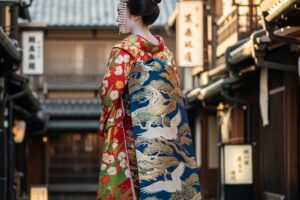
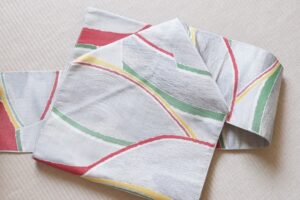
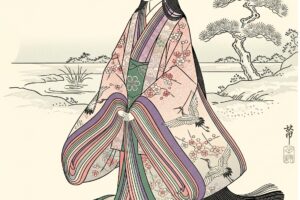
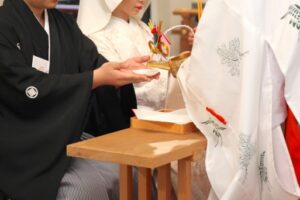
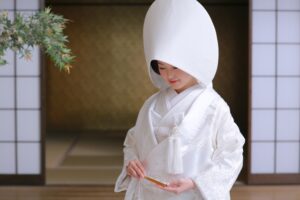
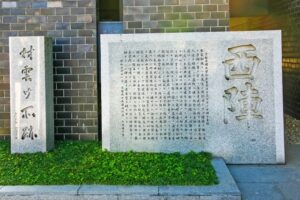

コメントを残す